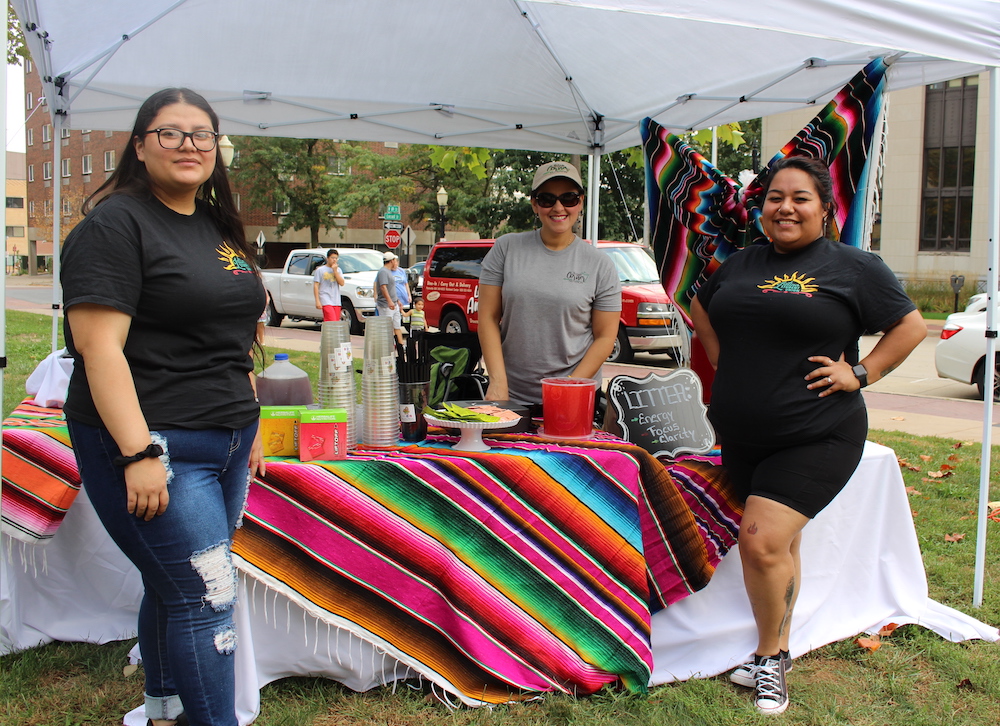Recommendations for Cultural Events

One of the most direct methods for developing cultural connections between communities is through supporting immigrant cultural events. These events allow the wider public to gain a better understanding and appreciation for different cultures, creating a greater sense of empathy and knowledge regarding immigrant populations. Cultural events can also be an empowering experience for immigrant communities. And hosting a larger number of immigrant celebrations and performances creates a greater diversity of events in the community, making this region richer and increasing the number of available experiences for residents. Helping support, organize, market, and fund immigrant cultural events can be beneficial for creating greater cultural connection.
Welcoming America has created a field scan of different art and cultural events used to support immigrant cultures. The report identified four key strategies:
- Bridging newcomers and longer-term populations
- Elevating cultural traditions as assets
- Engaging newcomers and other allies in civic processes
- Co-creating spaces that reflect identity
Each of these strategies, when conducted in partnership with members of immigrant communities, can be valuable ways for arts and culture organizations to support immigrant populations.[1]
A number of examples exist at the local level of support for immigrant cultural events. These include, but are not limited to: the support of Marshallese Independence Day each year in Dubuque, the Marshallese boat exhibit at the National Mississippi River Museum & Aquarium, the annual Latinx festival in Dubuque, a planned Cascade Latino Welcoming Event, and other programs that are hosted in the region.
One of the primary challenges identified by arts and culture organizations is the difficulty in establishing deep relationships with immigrant communities. This lack of connection can severely hamper any ability to develop new cultural programming or invite increased immigrant participation. For arts and culture organizations looking to build relationships with immigrant communities, here are some recommended best practices that may enable improved outreach:
- Repeated Engagement: Building trust is critical for developing new relationships, and one of the best ways to do this with immigrant populations is through repeated contact. This not only builds familiarity, but also demonstrates that the organization is interested in providing ongoing support and a longer-term engagement. Any organization looking to conduct outreach should plan on multiple meetings and repeated conversations on a consistent schedule. With limited resources and capacity for local organizations, this is often a much more difficult proposition than it may first appear. Organizations should be aware of this before planning outreach.
- The Creatives Café hosted by the City of Dubuque (where arts and culture organizations regularly set up space to engage with diverse artists from across the city) is a good example of a repeated engagement that is looking to establish long-term relationships with diverse communities.
- Leverage Partnerships: Developing partnerships with immigrant serving organizations and groups can be an effective way for arts and culture organizations to begin building contacts and relationships of their own. In addition, partnering with other arts and culture organizations can be a tool for reducing the difficulty of building long-term connections with immigrant communities. If arts and culture organizations are looking to set up repeated and consistent events with an immigrant community, sharing funding, scheduling, and engagement responsibilities among several organizations can help make this a more feasible prospect.
- Meet Immigrant Communities Where They Are: There are generally a number of barriers that might keep members of immigrant communities from attending events or meetings that help build relationships. Helping to reduce these barriers can make meetings much more accessible. Considerations include:
- Holding meetings in locations that are familiar to immigrant communities or that are located near where they live. Inviting immigrants to travel to a downtown office location may generate only a limited response. If it is necessary to choose a space further away from residential areas, providing transportation can be helpful.
- Choose times that are more feasible for immigrant community members. Evening sessions or weekend sessions are often better alternatives for people who may not be able to take time off between 9:00 and 5:00. Additional services like child care can also help families attend.
- Food is an important element of many cultures and is often included by many immigrant populations as a part of gatherings. Providing food, especially culturally appropriate food, can be a valuable way to get people to come and to make people feel welcome.
- Providing translation can create a more inclusive environment and can increase the number of community members who are able to engage in the event.
- Provide Something of Value: While many immigrants may be interested in engaging with arts and culture organizations, for some it will be difficult to take time off from a busy schedule unless they see an immediate benefit in the meeting. Some successful examples of how organizations can provide this value include centering the meeting around a topic that immigrant community members want to see moved forward (such as how to help immigrant youth engage with cultural traditions) or partnering with other organizations offering desired services (such as legal assistance or connections to job opportunities).
This recommendation also appears as Recommendation 7 under Education and Youth Support
In addition to a general support for immigrant cultural events, arts and culture organizations also have opportunities for targeted outreach to specific communities. Interviews and discussions during the Community Assessment point to international college students as one of the key groups on which organizations should focus. International students are often eager to engage with new cultural offerings, but their unfamiliarity with their new home and barriers like expense and transportation can often keep them from seeking out local opportunities. The region would benefit from this population developing closer ties with local arts and culture organizations. Helping attract and retain talented international students and convincing them to make this region their long-term home will significantly benefit the local economy, culture, and community.
Outreach to this population should involve partnership between arts and culture organizations and local higher education institutions, with a specific focus on connecting to international students (or at least students who are new to Dubuque). Making the opportunities easily accessible and highly visible will be important for students who are trying to adjust to a new home. In addition, reducing barriers like transportation or the cost of attendance and arranging events at times that are the most convenient for students will be important for making programming successful. Doing this could lead to great long-term benefits as international students build a relationship with the local community.
Arts and culture organizations can also play a major role in supporting programming for immigrant youth. These can be great opportunities to engage with young people, develop future connections, and help meet the priorities of immigrant populations, namely helping young individuals retain immigrant traditions and culture and helping build connections between immigrants and individuals from the wider community. Local school districts, the Multicultural Family Center, the Presentation Lantern Center, and other immigrant-focused organizations have connections with immigrant children that could be leveraged for additional programming.
For a description of a potential educational program that could partner with arts and culture organizations, please see Create an Expanded Marshallese Student Group in the Education and Youth Support section.
[1] Arroyo, John C. “Bridging Divides, Creating Community: Arts, Culture, and Immigration.” ArtPlace America, LLC and Welcoming America. 2020. Available at: https://welcomingamerica.org/wp-content/uploads/2021/01/artplacefieldscan-artsandculturestrategiesforimmigration_final_10_05_20_singlepages.pdf
To read about Building Connections with Immigrant Communities, click here. Use the following links to explore more deeply:
- For Capacity and Power Building, click here
- For Outreach, click here
- For Navigators, click here
- For Cultural Events, click here
To read a discussion regarding Ongoing Collective Work on Immigration, click here
For a review of seven different Issues Facing Immigrant Communities, click here
For a list of Priority Recommendations, click here
To return to the Welcome Page, click here
